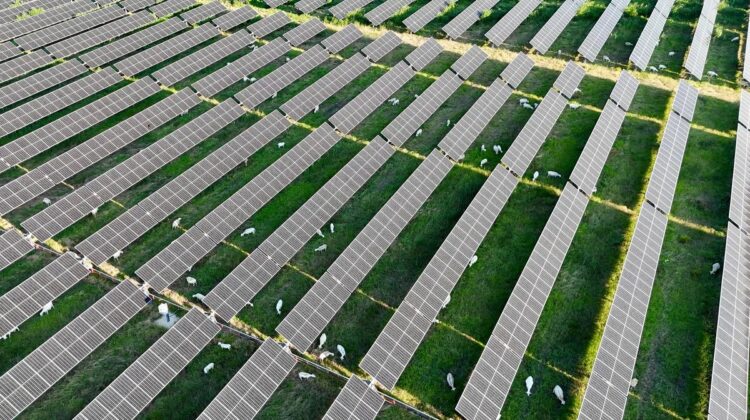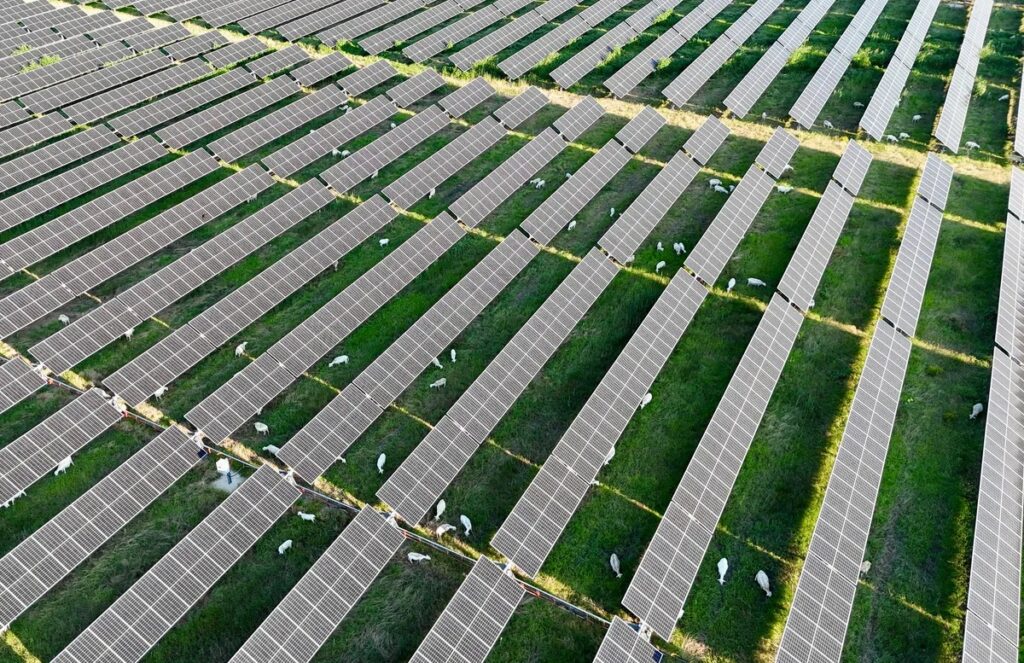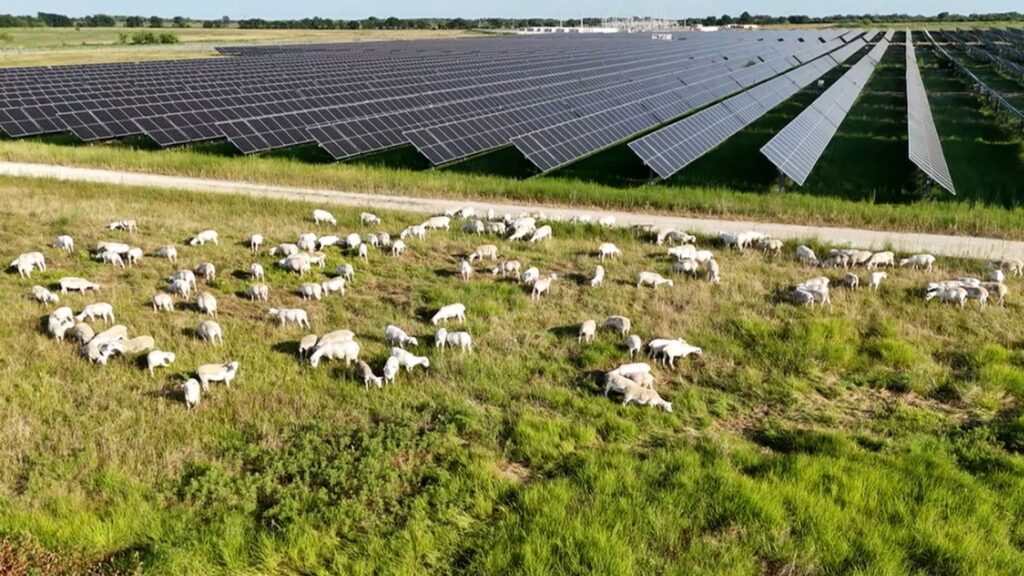
A groundbreaking initiative is set to transform land management practices in Texas as more than 6,000 sheep are scheduled to graze around solar panels across 10,100 acres (4,087 hectares). This ambitious project, touted as the largest solar grazing agreement in the US, is spearheaded by renewable energy operator Enel North America in partnership with Texas Solar Sheep LLC. With some sheep already on site, the plan aims to merge environmental stewardship with business efficiency in an unprecedented way.
The sheep will serve as “woolly gardeners,” consuming vegetation that grows around the solar panels. This approach not only eliminates the need for herbicides and fossil fuel-powered mowers but also offers additional ecological benefits. The manure from the sheep will naturally fertilize the soil, and their wool may carry wildflower seeds that sprout in their hoofprints. This method has proven effective in improving soil health, as evidenced by Enel’s previous solar grazing efforts in Minnesota, where organic matter increased by over 200 percent.

Marcus Krembs, head of external relations and sustainability at Enel North America, highlights the dual advantages of this approach: “By prioritizing sheep grazing for land management, we demonstrate how solar and agriculture can coexist while ensuring optimal performance of our solar facilities. Additionally, our sheep grazing commitment supports ecosystem services and the local economy.”
The concept of agrivoltaics—using land for both solar energy and agriculture—underpins this innovative strategy. Kevin Richardson, Outreach Director at the American Solar Grazing Association, notes that “solar grazing is at the forefront of a booming agrivoltaics industry, and we are seeing more and more leaders in the solar industry investing in long-lasting partnerships with farmers and creating new opportunities for American agriculture.”

The benefits of this method are multifaceted. Grazing sheep to manage vegetation is not only more cost-effective than traditional mowing but also less likely to damage the solar panels. Additionally, sheep are less likely to cause damage to the infrastructure compared to other grazers, such as goats. Jesse Puckett, director of sustainability projects and community affairs at Enel, emphasizes, “This saves us money. It’s an efficient way to do this. It’s great for the environment, but it also helps our bottom line. And so it’s a win-win for us.”
Puckett further explains, “I think we recognize the fact that, as an industry, we have this amazing opportunity to do things a little bit different.”

For Texas Solar Sheep, a family-owned and operated business, the integration of sheep grazing with solar panels is a new twist on traditional ranching. JR Howard, co-owner of the company, describes their operations: “We really operate just like a regular ranch. The only difference is that we have solar panels.”
This innovative grazing approach is not only environmentally friendly but also opens new revenue streams for sheep herders. Howard remarks, “The booming demand for solar grazing is the greatest opportunity for the sheep industry in my lifetime.”
With this pioneering project, Enel North America and Texas Solar Sheep LLC are setting a new standard for the synergy between renewable energy and agriculture, promising both ecological and economic benefits.

Leave a Reply